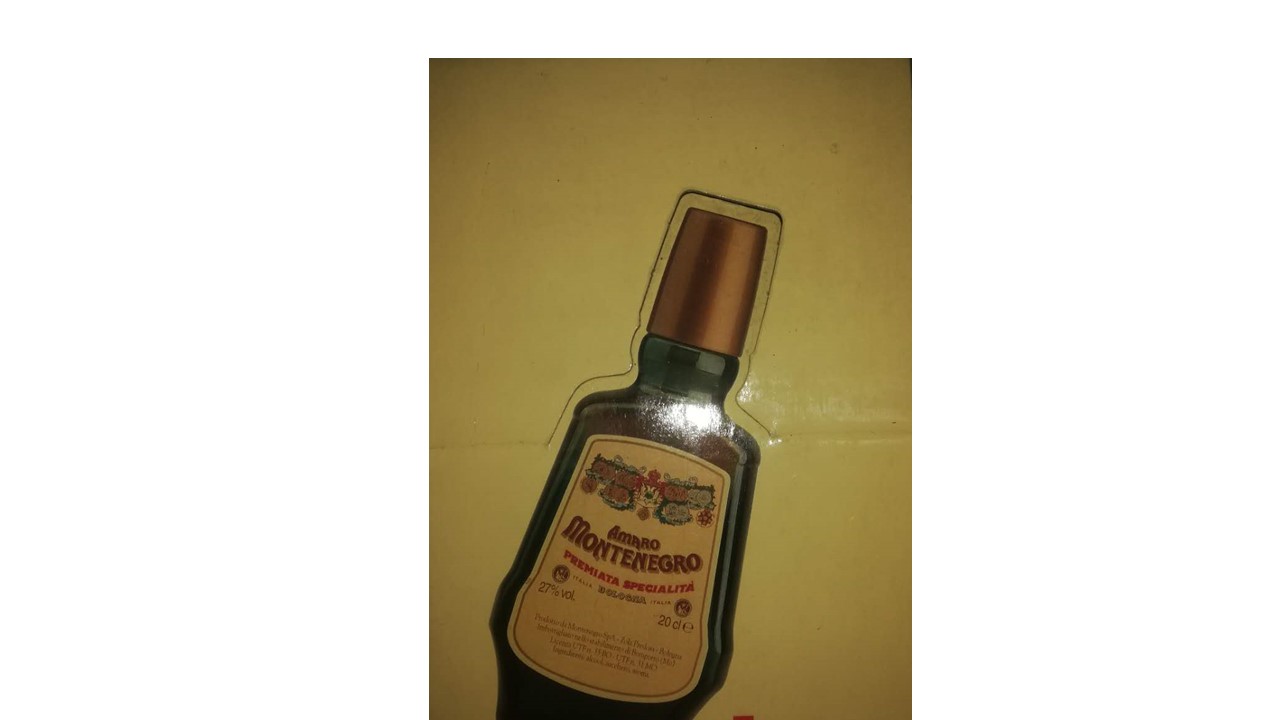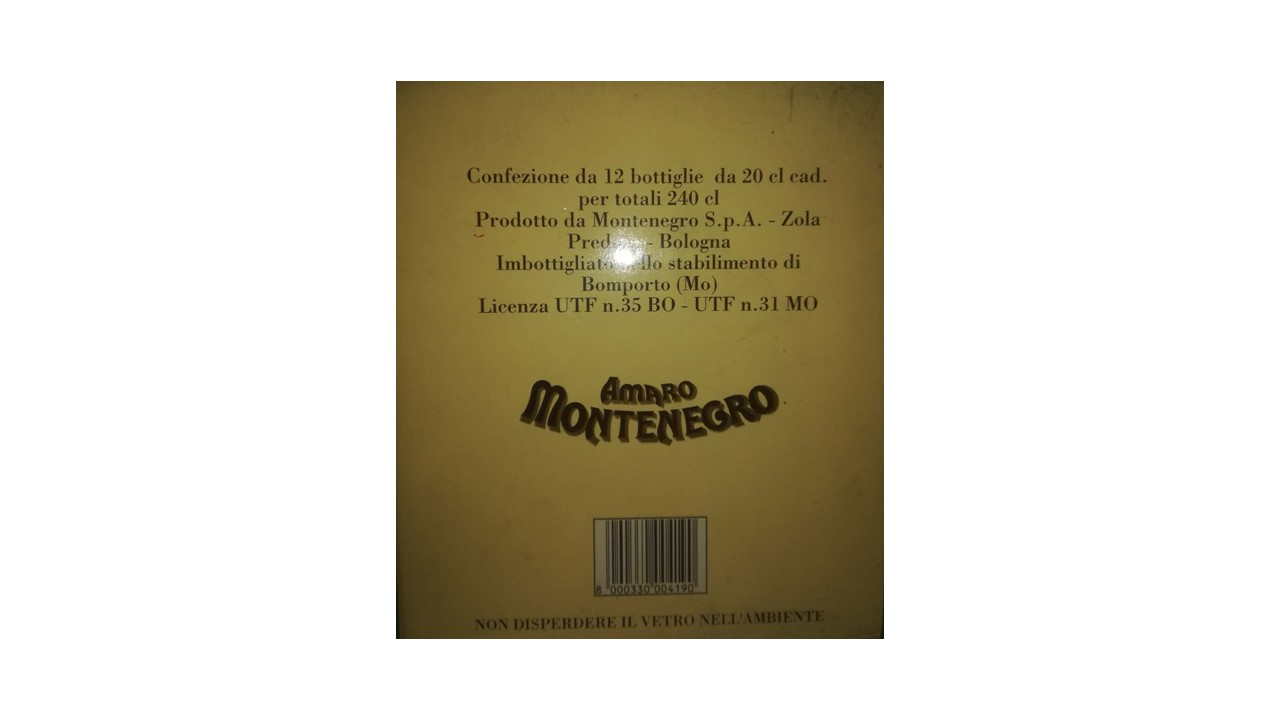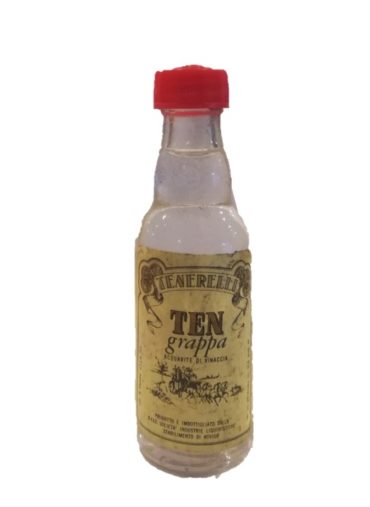Una confezione che sembra uscita dalla produzione proprio questi giorni, è una confezione di 12 fiaschette di Amaro Montenegro da 20 cl. Si trovava nei locali in vendita nei anni 70/80 oggetto rarissimo ancora così confezionato.
L’amaro Montenegro non ha bisogno di molte presentazioni è famosissimo e presente in tutto il mercato mondiale.
Il creatore dell’amaro fu Stanislao Cobianchi, un giovane bolognese predestinato dalla famiglia alla carriera ecclesiastica. Da Bologna decise tuttavia di intraprendere un viaggio per il mondo che lo portò alla scoperta di insolite specialità botaniche.
Tornato in Italia, si dedicò alla preparazione di liquori e nel 1885 creò l'”Amaro Montenegro”. L’amaro nacque con il nome di Elisir Lungavita, undici anni dopo, in occasione del matrimonio di Elena del Montenegro con Vittorio Emanuele III, Stanislao decise di dedicarle il suo elisir, cambiandone il nome in Amaro Montenegro.
In poco tempo, l’amaro si diffuse e venne apprezzato in Italia e in tutta Europa e Gabriele D’Annunzio, nel 1921, lo definì liquore delle Virtudi.
La ricetta di Amaro Montenegro è ancora oggi quella originale di Stanislao Cobianchi, a base di quaranta erbe aromatiche selezionate, provenienti da tutto il mondo a cui si deve il suo sapore caratteristico.
Amaro Montenegro è prodotto seguendo la ricetta scritta da Stanislao Cobianchi e conservata in cassaforte dal 1885. Gli ingredienti, le dosi e i processi di lavorazione sono gli stessi, conosciuti da un numero ristretto di persone, tra cui il Master Herbalist, che controlla che ogni passaggio sia compiuto a regola d’arte, nel rispetto della ricetta originale.
La ricetta prevede la bollitura, macerazione e distillazione di quaranta erbe aromatiche: spezie, frutta essiccata, radici, semi, cortecce, scorze di agrumi, rizomi, fiori e legni provenienti da tutto il mondo. Le tre fasi portano alla produzione di dodici essenze, da cui vengono tratte le sei note aromatiche alla base di Amaro Montenegro.
A queste sei note si aggiunge un’ultima nota, chiamata Premio, risultato della micro-distillazione di cinque erbe aromatiche. Infine il preparato viene miscelato con alcol, acqua e zucchero e imbottigliato.
La produzione dura sei mesi, come indicato dalla ricetta originale.
A package that seems to have gone out of production these days is a pack of 12 flasks of Amaro Montenegro of 20 cl. It was found in the premises on sale in the 70/80 very rare object still so packaged.
The bitter Montenegro does not need many presentations, it is very famous and present on the world market.
The creator of the bitter was Stanislao Cobianchi, a young Bolognese predestined by the family for an ecclesiastical career. From Bologna, however, he decided to embark on a journey around the world that led him to discover unusual botanical specialties.
Back in Italy, he devoted himself to the preparation of liqueurs and in 1885 created the “Amaro Montenegro”. The amaro was born with the name of Elisir Lungavita, eleven years later, on the occasion of Elena’s wedding of Montenegro with Vittorio Emanuele III, Stanislao decided to dedicate her elixir to her, changing the name to Amaro Montenegro.
In a short time, the bitter spread and was appreciated in Italy and throughout Europe and Gabriele D’Annunzio, in 1921, called it the liqueur of the Virtudi.
The Amaro Montenegro recipe is still the original one of Stanislao Cobianchi, based on forty selected aromatic herbs, from all over the world to which it owes its characteristic flavor.
Amaro Montenegro is produced following the recipe written by Stanislao Cobianchi and stored in a safe since 1885. The ingredients, doses and manufacturing processes are the same, known by a small number of people, including the Master Herbalist, who checks that every step is made in a workmanlike manner, respecting the original recipe.
The recipe calls for the boiling, maceration and distillation of forty aromatic herbs: spices, dried fruit, roots, seeds, bark, citrus peel, rhizomes, flowers and woods from all over the world. The three phases lead to the production of twelve essences, from which the six aromatic notes from Amaro Montenegro are drawn.
To these six notes is added a final note, called Premio, result of the micro-distillation of five aromatic herbs. Finally the preparation is mixed with alcohol, water and sugar and bottled.
The production lasts six months, as indicated by the original recipe.
Mignon VOV
10,00€










Recensioni
Ancora non ci sono recensioni.